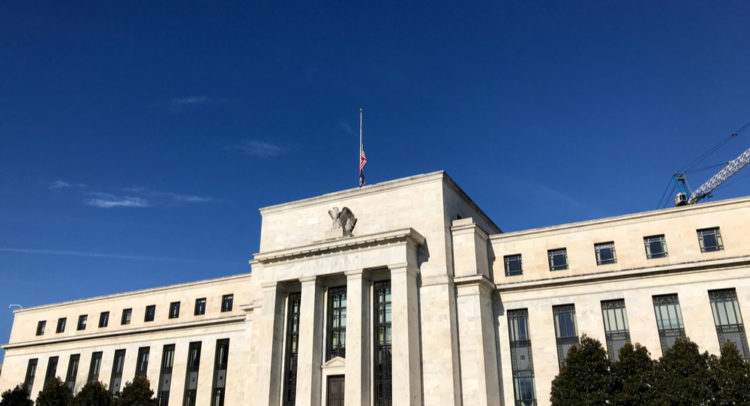Next week will be a big week for the world’s central bankers.
Discover the Best Stocks and Maximize Your Portfolio:
- See what stocks are receiving strong buy ratings from top-rated analysts.
- Filter, analyze, and streamline your search for investment opportunities with TipRanks’ Stock Screener.
Both the Federal Reserve and the ECB are holding their regular monetary policy meetings to decide the direction of monetary policy. Financial markets follow these meetings closely, as they can change the game.
That’s particularly the case this time around as both central banks are at a turning point, ready to switch from a highly accommodating policy to a neutral approach to fight the rising inflation on both sides of the Atlantic.
That won’t be easy given that the spread of the Omicron COVID-19 variant. It complicates matters by raising the risk of slowing down the economic recovery from the pandemic recession. Already, America’s GDP has slowed down from 6% in the second quarter to the 2% in the fourth quarter, as job growth has remained anemic.
Simply put, central bankers may be facing a dual problem shortly: elevating inflation combined with slowing economic growth. That’s a far more difficult problem to deal with rather than the problem of inflation alone, so central bankers must be extra cautious in crafting and conveying their messages to financial markets.
The Fed’s Messages
Luigi Speranza, Chief Global Economist, BNP Paribas Markets 360, has compiled four messages that may come out from the FOMC next week.
First, there will be an announcement of tapering the bond-buying program in the amount of $30 billion per month.
Second, a simultaneous upward revision to inflation and a downward revision to unemployment. That could signal the shift of the FOMC from a more dovish to a more hawkish direction.
Third, the announcement of two 25 basis point hikes in short-term interest rates in 2022 and six more hikes through 2024.
Fourth, rate hikes are to proceed cautiously – the first rate hike should come in June, followed by seven rate hikes in total by the end of 2023. That’s certainly a lot of rate hikes for financial markets accustomed to near free money to digest.
ECB messages
Meanwhile, Speranza expects ECB to be on the same page with the Fed and include three messages.
The first message is that ECB will end net purchases under its pandemic emergency buying program in March 2022, and announce an expanded and more flexible asset-buying program.
Then there is the timing of this decision. It now looks more uncertain due to the emergence of the Omicron variant. At this point, the December 16 meeting “looks likely to be a can-kicking exercise.”
There’s also the possibility that the ECB might decide to postpone at least part of the decision. That could pave the way to a less dovish stand of its policy tools than otherwise at a later stage.
Still, there could be surprises on either side of the Atlantic, setting financial markets up for another wild ride, given the current valuations.
Disclaimer: The information contained in this article represents the views and opinion of the writer only, and not the views or opinion of TipRanks or its affiliates. Read full disclaimer >









